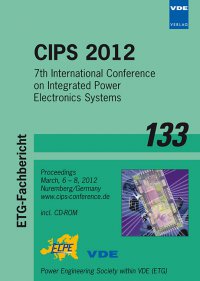Separating Failure Modes in Power Cycling Tests
Conference: CIPS 2012 - 7th International Conference on Integrated Power Electronics Systems
03/06/2012 - 03/08/2012 at Nuremberg, Germany
Proceedings: CIPS 2012
Pages: 6Language: englishTyp: PDF
Personal VDE Members are entitled to a 10% discount on this title
Authors:
Schmidt, Ralf; Scheuermann, Uwe (SEMIKRON Elektronik GmbH & Co. KG, Nuremberg, Germany)
Abstract:
The direct comparison of silver-sintered and soldered chip-DBC-interconnects allows studying the influence of the two main end-of-life failure modes in power cycling tests separately. While the failure mode for silver sintered modules is limited to pure wire bond failures, soldered modules with improved wire bond geometries fail exclusively due to chip solder fatigue in the investigated range of junction temperature swings. This clear separation makes it possible to study the influence of different power cycling test parameters exclusively on one specific failure mode without the distorting effect of interaction. Knowing the behaviour of the individual failure mode is the key factor for the development of a more detailed lifetime curve, which not only yields the number of cycles to failure but also takes into account different failure modes. This contribution presents a detailed power cycling study to explain the concept of separating failure modes. As a first step towards a superior lifetime model the influence of the power on-time both on the wire bond failure and on the solder joint degradation was investigated.


